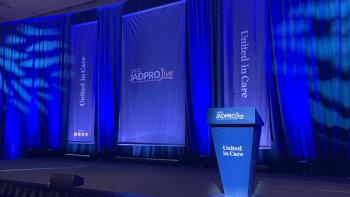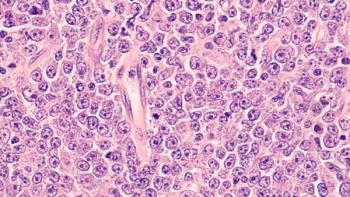
News


The FDA has approved sevabertinib for the treatment of patients with HER2-positive non-squamous non-small cell lung cancer.

Germline and somatic testing can inform treatment and family risk up front, but NGS is often held for recurrence, explained Courtney R. Arn, APRN-CNP.

The FDA granted standard approval to epcoritamab monotherapy and epcoritamab plus lenalidomide and rituximab for relapsed/refractory follicular lymphoma.

Nivolumab displayed significant RFS benefit compared with ipilimumab in patients with resected stage IIIB to IIIC or IV melanoma.

Gabriel Schwartz, MSN, NP, explains how mechanisms of action determine the safety of systemic treatments in metastatic colorectal cancer post chemotherapy.

Integrating PRO tools in survivorship care may help oncology nurses address ongoing emotional and physical needs of ovarian cancer survivors.

Here are 5 presentations that oncology APPs should know about, from patient management to practice management.

The FDA has approved a biosimilar of pertuzumab that is indicated for multiple breast cancer settings.

The FDA has approved ziftomenib for relapsed or refractory acute myeloid leukemia harboring NPM1 mutations with no alternative treatment options.

Kristi Orbaugh, MSN, RNP, AOCN, AOCNP, shared the key toxicities of each CDK4/6 inhibitor and how to monitor for them.

Care at every step is the ethical duty of nurses, says Katherine Brown-Saltzman, MA, RN, in this episode of Onc Nurse On Call.

After undergoing EBRT and brachytherapy at 14, an AYA cancer survivor discusses her experience with a rare vaginal cancer and Turner syndrome.

Catherine Boyles, RN, OCN, explains how to help patients help themselves when preparing for appointments.

Laura J. Zitella, MS, RN, ACNP-BC, AOCN, explains that later cytopenias should be monitored in patients undergoing CAR T-cell therapy.

Durvalumab plus FLOT chemotherapy improved overall survival in resectable gastric or gastroesophageal junction cancer, per phase 3 MATTERHORN data.

The FDA has approved subcutaneous daratumumab and hyaluronidase-fihj for use in patients with high-risk smoldering multiple myeloma.

An oncology APP-led quality assurance committee identified key safety events across disciplines and specialties.

The frontline addition of cancer vaccine IO102-IO103 to pembrolizumab demonstrated an increase in PFS in patients with advanced melanoma.

Daniel Glidden, MS, PA-C, discusses key data oncology APPs should be aware of and how to start incorporating exercise in cancer care.

T-DXd plus pertuzumab improved PFS and DOR across HER2+ breast cancer subgroups, regardless of prior therapy or PIK3CA mutation status.

Disitamab vedotin/toripalimab improved PFS and OS vs chemotherapy in HER2-expressing advanced urothelial carcinoma, per phase 3 RC48-C016 data.

Treatment for patients with R/R multiple myeloma should be based on the individual patient and their history, said Lisa Hwa Christenson, DNP, APRN, CNP.

Among lymphoma survivors, a multidisciplinary intervention program had a beneficial effect on fatigue and aspects of health-related quality of life.

Twenty-year follow-up demonstrated continued imatinib efficacy in advanced GIST with doubled median overall survival.

Using gender-neutral language is the first step in making a safe space for LGBTQIA+ patients with cancer, explained Al Asante-Facey, PA, MBA.

Supervised physical activity, while feasible, was not shown to affect quality of life or fatigue in patients with metastatic cancer.

Paola Gonzalez, MPAS, PA-C, explains how third-party vendors shape insurance guidelines and what oncology APPs should know when navigating peer-to-peer reviews.

Korie Bigbee, DNP, explains the necessity of survivorship care and how to enact changes to make it more accessible to patients with cancer.

Dermatitis and lymphedema are among the most pertinent adverse effects of radiation to the breast, according to Alexa M. Lantz, MSPAS, PA-C.

